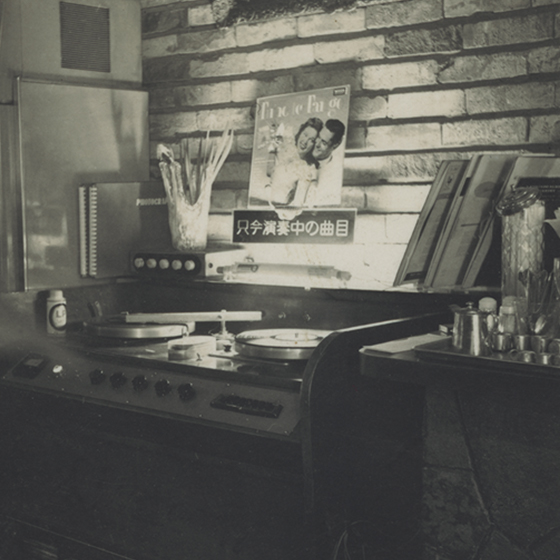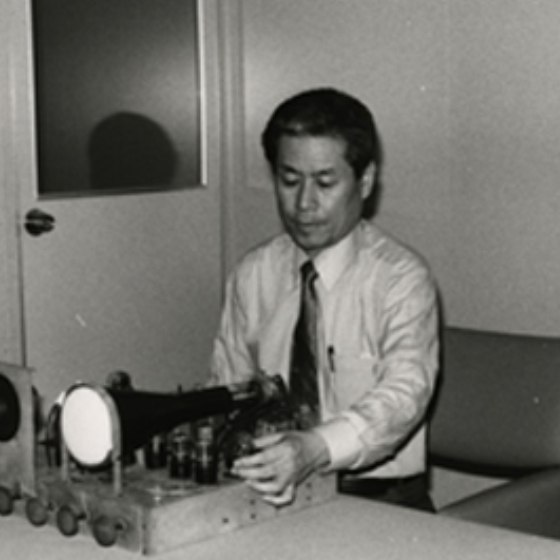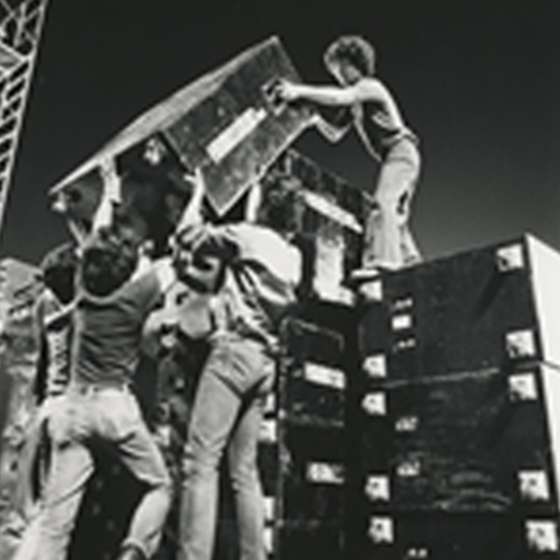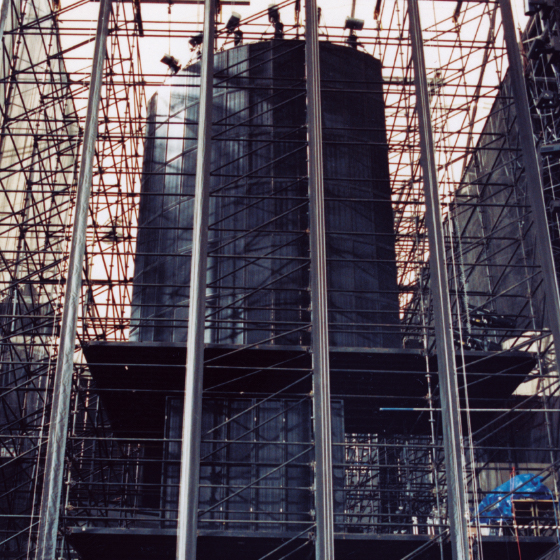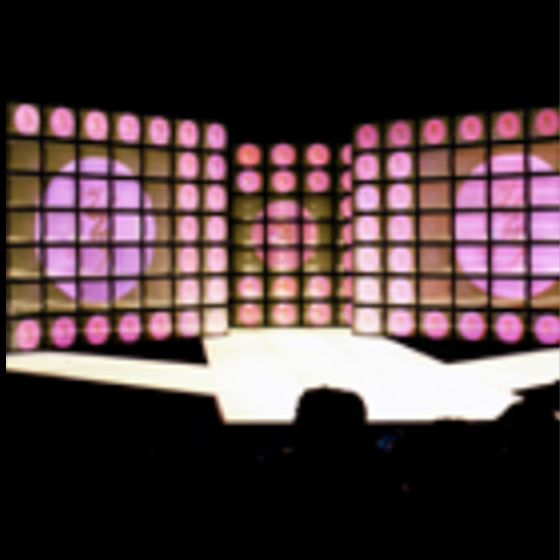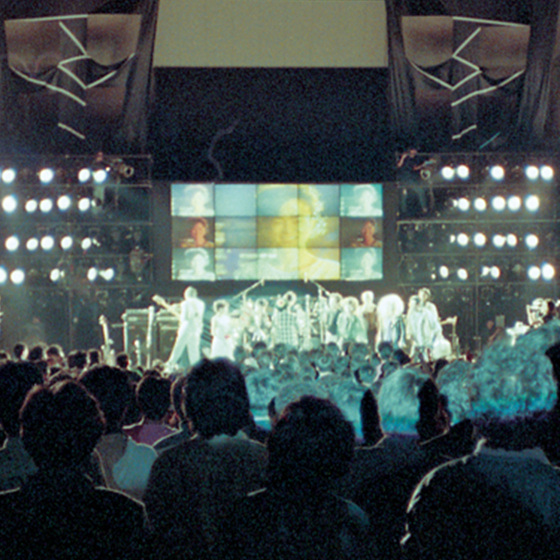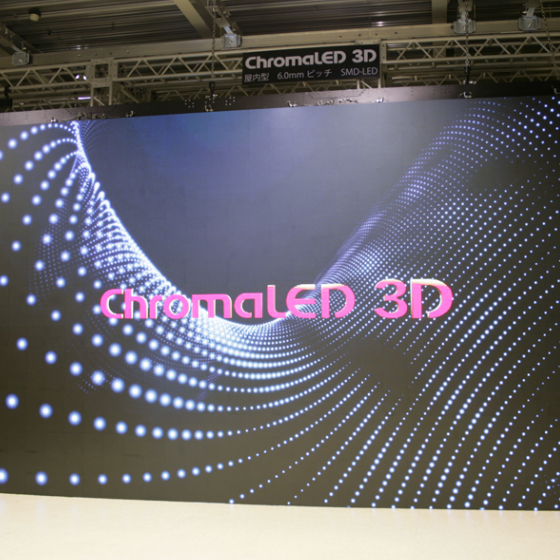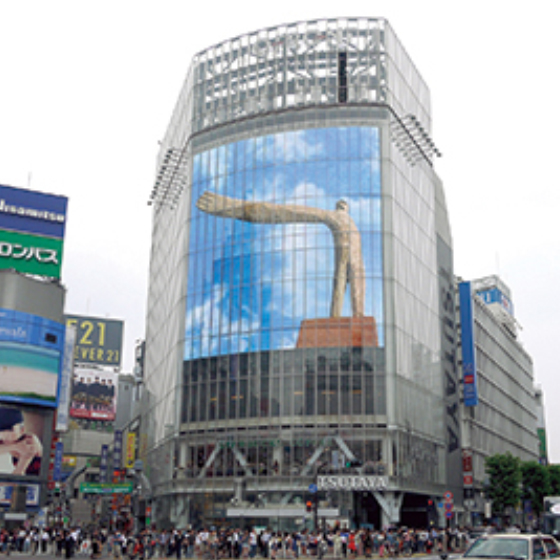-
November 1964Hibino Electro Sound Inc. was established at 2-7-5 Asakusabashi, Taito-ku, Tokyo with a capital of ¥800 thousand by incorporating Hibino Electric, a formerly sole proprietorship founded in June 1956. Started design, sales and repair of professional audio equipment.
-
April 1971Started operation business of lending, installing, and operating audio equipment for concerts.
-
September 1976Moved headquarters to 4-6-8 Asakusabashi, Taito-ku, Tokyo.
-
July 1983Opened Osaka Office.
-
November 1983Moved headquarters to 5-10-2 Shirokane, Minato-ku, Tokyo.
-
May 1984Started full-scale video service business.
-
April 1985Started operation business of lending, installing, and operating large video equipment.
-
November 1987Started installation business for audio, video and computer systems.
-
June 1988Company name changed to Hibino Corporation and headquarters moved to 3-5-14 Konan, Minato-ku, Tokyo.
-
April 1989Opened Fukuoka Office.
-
May 1989Started system design, sales, and maintenance of permanent video and audio equipment for corporate showrooms and exhibition facilities.
-
June 1990Obtained Tokyo Governor's Permit (General 2) No. 83271 for construction business (telecommunications construction business).
-
October 1991Opened Sapporo Office.
-
February 1995Made a capital participation in Chromatek Inc., a manufacturer of video peripheral equipment, and started development assistance and sales of its products. The company changed its name to Hibino Chromatek Inc. in August 2001.
-
April 1995Opened Nagoya Office.
-
June 2000Established Hibino.com, Inc. and entered the video and audio distribution service via the internet. Carried out an absorption merger of the company in July 2004.
-
November 2002Integrated the business of Hibino Chromatek Inc. and started development, manufacturing and sales of video equipment.
-
March 2003Obtained ISO 9001:2000 quality management standard.
-
February 2006Listed our stock on the JASDAQ Securities Exchange (currently the Tokyo Stock Exchange Standard Market).
-
August 2006Obtained Minister of Land, Infrastructure, Transport and Tourism Permit (General-18) No. 21843 for general construction business (telecommunications construction business).
-
September 2006Made Media Technical Co., Ltd a wholly owned subsidiary. The company changed its name to Hibino Media Technical Corporation in July 2010.
-
April 2007Made Item Plus Co., Ltd. a wholly owned subsidiary. Carried out an absorption merger of the company in January 2009.
-
April 2007Established Hibino Europe Limited, a local subsidiary (wholly owned subsidiary) in the United Kingdom. Liquidated the company in October 2020.
-
August 2007Established Hibino Asia Pacific Limited, a local subsidiary (subsidiary) in Hong Kong.
-
December 2007Made Heavy Moon, Inc. a wholly owned subsidiary. The company changed its name to Hibino Intersound Corporation in January 2009.
-
Mary 2008Made Studer Japan-Broadcast Ltd. a wholly owned subsidiary. Carried out an absorption merger of the company in October 2019.
-
April 2010Established Hibino Asia Pacific (Shanghai) Limited, a subsidiary in Shanghai, China. The company liquidated in December 2023.
-
October 2010Made Victor Arcs Co., Ltd. an equity method affiliate. The company changed its name to JVC KENWOOD Arcs Corporation in July 2014.
-
November 2011Made Hibino Asia Pacific Limited wholly owned subsidiary.
-
January 2013Subsidiary Hibino Media Technical Corporation made Broadcast Equipment Service Co., Ltd. a wholly owned subsidiary. Broadcast Equipment Service Co., Ltd. changed its name to Hibino Besco Corporation in April 2014. Carried out an absorption merger of the company in October 2021.
-
June 2013Made Eightythree Corporation a wholly owned subsidiary.
-
July 2013Made First Engineering Co., Ltd. a wholly owned subsidiary. Started sales of commercial lighting equipment, system design, installation, and maintenance services. The company changed its name to Hibino Lighting Inc. in February 2016.
-
March 2014Made Covalent Sales Corporation a wholly owned subsidiary. The company changed its name to Hibino Imagineering Corporation in July 2014.
-
November 2014Subsidiary Hibino Media Technical Corporation made Medianix Inc. a wholly owned subsidiary. Hibino Media Technical Corporation carried out an absorption merger of Medianix Corporation in April 2016.
-
April 2015Made Nittobo Acoustic Engineering Co., Ltd. a wholly owned subsidiary. The company changed its name to Nihon Onkyo Engineering Co., Ltd. in July 2015.
-
April 2016Made ELECTORI CO.,LTD. a wholly owned subsidiary.
-
December 2016Made JVC KENWOOD Arcs Corporation, an equity method affiliate, a subsidiary. The company changed its name to Hibino Arcs Corporation in July 2017. The company changed its name to Hibino Spacetech Corporation in October 2020.
-
May 2017Established local subsidiaries (wholly owned subsidiaries) Hibino USA, Inc. and H&X Technologies, Inc. in the United States.
-
January 2018Subsidiary Nihon Onkyo Engineering Co., Ltd. established a local subsidiary (subsidiary), NOE Asia Pacific Co., Ltd., in Thailand. NOE Asia Pacific Co., Ltd. liquidated in June 2025.
-
May 2018Established Hibino Entertainment Corporation.
-
December 2018Made TECHNO HOUSE INC. a wholly owned subsidiary.
-
January 2019Made South Korean companies Sama Sound Inc., Sama D&I Co., Ltd. and Sama CDS Inc. subsidiaries. Carried out the absorption merger of Sama D&I Co., Ltd. by Sama Sound Inc. in April 2025.
-
February 2019Subsidiary Hibino USA, Inc. made TLS PRODUCTIONS, INC. of the United States a subsidiary. TLS PRODUCTIONS, INC. liquidated in December 2024.
-
April 2019Made NIPPON SHEET GLASS ENVIRONMENT AMENITY CO.,LTD a wholly owned subsidiary. The company changed its name to NIPPON ENVIRONMENT AMENITY CO.,LTD. in June 2019.
-
August 2019Subsidiary Nihon Onkyo Engineering Co., Ltd. made SANOH CORPORATION a wholly owned subsidiary.
-
December 2019Established Hibino Europe B.V., a local subsidiary (wholly owned subsidiary) in the Netherlands.
-
February 2020Made Sigma A&V and Rental Corporation a wholly owned subsidiary. The company changed its name to Hibino Sigma Rise Corporation in April 2024.
-
December 2022Made Cerevo Inc. a subsidiary.
-
December 2023Made NGC Corporation a wholly owned subsidiary. The company changed its name to Hibino Graphics Corporation in July 2025.
-
May 2024CH Holdings Inc.and its wholly owned subsidiaries ellroy Inc., SAZABI Inc., Delancy Inc., RECO inc., illi Inc., CHAMELEON Inc., BOLDTYPE Inc., massive inc., and Canaan Inc. were made subsidiaries. illi Inc. changed its name to Torie Inc. in September 2024.
-
August 2024Made Ofix Co., Ltd. a subsidiary.
-
November 2024Made InSight Systems Holdings Pty Ltd and its wholly owned subsidiaries InSight Systems Unit Trust and InSight Systems Group Pty. Ltd. in Australia its subsidiaries.
-
April 2025Made Singapore-based Spectrum Audio Visual Pte. Ltd., Spectrum AV Holdings Pte. Ltd. and their wholly-owned subsidiaries Spectrum Audio Visual Sdn. Bhd. in Malaysia, Spectrum Investment Ceylon (Pvt) Ltd. in Sri Lanka, and PT Spectrum Audio Visual in Indonesia subsidiaries.
(Note) Names of organizations are as they were at the relevant time.


